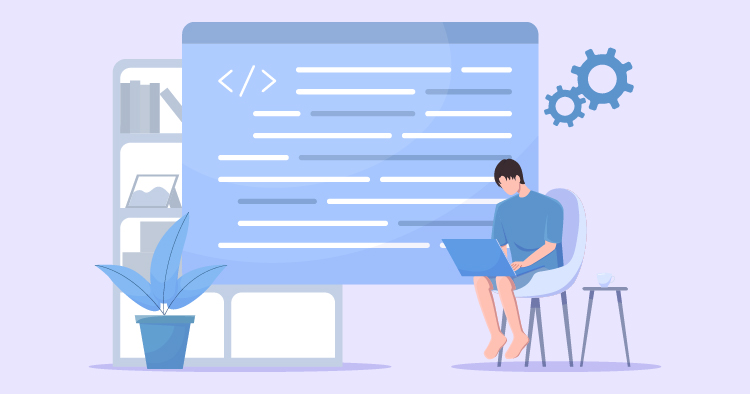Small businesses aiming to stand out online must understand the vital connection between web design and front-end development. It’s all about creating a website that looks great and works well. Think of it like a team, where design is about making your site look inviting and professional, while front-end development is about ensuring everything functions smoothly. When these two areas work together, visitors enjoy a better experience, which can help a business shine. A well-integrated website is more than just lovely; it’s quick to load, easy to use, and accessible to everyone. Small business owners who focus on this synergy can expect a real boost in how often visitors turn into customers.
Understanding Web Design and Front-End Development
Web design is about making your website look good and easy to use. It’s like planning a house’s appearance before you build it. You decide what colors to paint the walls, where the furniture should go, and make sure everything looks friendly and inviting. Web designers think about the layout of the pages, what colors and fonts to use, and how to arrange pictures and text so that people enjoy visiting your site.
Front-end development is like taking the designer’s plans and building the house. Instead of using bricks and mortar, developers use code—HTML, CSS, and JavaScript—to construct the website. They make sure that all the buttons, links, and pages work correctly and that the website looks great on laptops, tablets, and phones. It’s essential that the website looks good and works well so that people can find what they need without any hassle.
When web design and front-end development work closely together, it’s like having an architect and a builder communicating ideally to create a beautiful, sturdy house. For small businesses, this teamwork is super important. It ensures that their website is a pretty face and a place where customers can shop, learn, and get in touch quickly.
The Benefits of Bridging the Gap
Your website can shine when web designers and developers team up from the start. This partnership can make your website load quickly, which is great because no one likes to wait for a slow page to load. It also means that when people use your website, everything feels smooth and natural, which makes them want to stick around longer.
This good teamwork can make visitors more excited about your offerings. If your website is beautiful and easy to use, people are more likely to read about your products, share your pages with friends, or buy something. Plus, when customers trust that your website works well and looks professional, they’re more likely to sign up for your newsletter or contact you, which is great for your business.
Streamlining Communication and Collaboration
Effective teamwork is crucial in web development. When web designers and front-end developers do not work closely together, problems like misunderstandings, a disjointed end product, and delays can occur. Small businesses, in particular, need to ensure these teams work smoothly together.
Strategies such as holding regular meetings, using shared tools, and setting common goals can significantly improve teamwork. Project management software is helpful because it allows both teams to see what everyone is working on, share documents, and talk to each other without delay. Another key is to create an environment where everyone feels comfortable giving and receiving feedback. This can lead to a better result that looks good and works well.
Select one of over 500 designs and establish your online presence.
- Free Web Hosting
- Fully Managed Solutions
- Scalable Websites
- No Hidden Cost
User-Centric Design Principles
Designing with the user in mind ensures the website serves the people who will use it. This approach is vital to create a site that’s good-looking, functional, and easy to use. When a business focuses on the user, it is more likely to develop a website that truly meets the needs of its audience, which can lead to a better experience for everyone who visits the site.
To apply these principles well, web designers and front-end developers must work together closely. This creates a more well-rounded approach to building a website. This approach considers the visual impact of design choices and their effect on the overall user experience. Combining design and development strengths will make the final website more likely to delight and serve its users effectively.
Optimizing Website Performance
Web designers and front-end developers must work together to make websites run faster and smoother. They focus on ensuring that websites look good and work well no matter what browser or device someone is using. To do this, they use various techniques that make the website more efficient.
One significant way to improve a website’s performance is through code optimization. This means changing the HTML, CSS, and JavaScript to run faster. It’s like cleaning up and organizing a messy room so you can find everything more easily. This can significantly speed up a webpage’s load time.
Another vital aspect is image optimization. This is all about making the images on a website smaller in file size without making them look worse. Smaller image files mean webpages can load much quicker, which is essential because no one likes to wait for a slow website to load.
It’s also crucial that a website works well on all browsers. Whether someone is using Chrome, Firefox, Safari, or another browser, the website should look and function the same. This consistency ensures that every visitor has an enjoyable experience on the website.
Seamless Mobile Experience
Having a website that works well on mobile devices is no longer just a nice extra—it’s absolutely necessary. Today, a big part of web design and development is ensuring that websites look and work great on smaller screens, such as smartphones and tablets.
When a website is easy to use on a mobile device, people are likelier to stick around, come back, and even buy things if it’s an online store. This is because an excellent mobile experience makes people happy, and happy visitors are likelier to become customers.
Making your website mobile-friendly is also crucial because it affects how high your site appears in search engine results. Search engines, like Google, prefer websites that are optimized for mobile. This means that if you want people to find your website when they search online, it needs to work well on their phones and tablets.
Select one of over 500 designs and establish your online presence.
- Free Web Hosting
- Fully Managed Solutions
- Scalable Websites
- No Hidden Cost
Accessibility and Inclusivity
When we make websites, it’s important to remember that they should be easy for everyone to use, including people with disabilities. It’s not just about following the law; it’s about being fair and ensuring everyone has the same chance to use your website. This means thinking about people who might have trouble seeing, hearing, moving, or understanding things.
To do this right, the people who design websites and the people who build them need to work together. They have to make sure things like colors, text size, and how you move around the site work for everyone. Developers have a toolbox of tricks like ARIA roles to help with this. These unique codes tell web browsers how to make content more user-friendly for people with disabilities. Meanwhile, designers focus on ensuring the site looks good and that these codes fit well with the design.
Enhancing User Engagement
A great website doesn’t just do its job; it also looks good and is fun. That’s why web designers and developers need to collaborate. Together, they can create a website that works smoothly, catches your eye, and keeps you interested.
There are some excellent ways to make a website more engaging. For example, animations can make the site more lively and help tell the site’s story. Then there are micro-interactions–those little bits of feedback you get when you do something on the site, like a button that changes color when you click it. These minor details can make the website feel alive. Good navigation is also crucial. It should be easy for people to find their way around the site and get what they’re looking for without getting lost or frustrated. This makes the total experience better for everyone who visits the site.
Search Engine Optimization (SEO)
SEO is essential for attracting visitors to your website without paying for ads. It’s about ensuring your site appears high up when people search for topics you cover. This involves tweaking your site’s content, ensuring your titles and descriptions (meta tags) are clear and relevant, and organizing your website’s addresses (URLs) neatly. It also means ensuring your website loads quickly and looks good on phones (mobile responsiveness).
For a successful SEO strategy, web designers and developers must work together. Designers focus on making the website easy to use and pleasant to look at, while developers handle the behind-the-scenes work to make the site fast and accessible to different devices. When they work harmoniously, they create visually appealing websites that rank well on search engines.
Keeping Up with Evolving Technologies
Web design and front-end development are constantly changing, with new tools and approaches constantly appearing. Professionals must keep learning to ensure they can build the latest and most excellent websites.
By staying current with new technologies, web designers and developers can add fresh features and keep up with current design trends. This could be anything from learning new ways to style websites (CSS frameworks) to using the latest tools for making websites interactive (JavaScript libraries). Keeping up with these changes means they can build websites that are not just up-to-date but also more powerful and engaging for visitors.
Final Thoughts
Combining web design and front-end development is a smart move for small businesses. It’s not just about building a website—it’s about creating a powerful tool for your business. When these elements are in sync, the entire process of creating and maintaining a website is smoother. This means your site can adapt quickly to new trends and user needs. A united front in design and development can help your site rank better on search engines, please your customers, and even increase your sales. In the competitive digital market, a well-designed website is crucial for any small business wanting to thrive.



